The SilverStone IceGem AIO Coolers Review: Going Big For Threadripper
by E. Fylladitakis on July 21, 2021 9:00 AM EST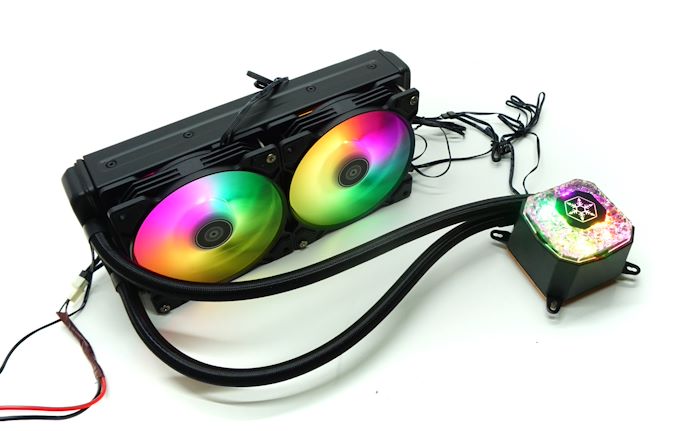
SilverStone used to be a small company that started as a designer of unique PC case designs, but today it is one of the most well-established PC component manufacturers worldwide. The company’s philosophy revolves around the design of high-quality but also cost-effective and practical products, forgoing extravagant and swanky aesthetic designs. That tactic served SilverStone very well in the past, as we've seen first-hand how the cost-effectiveness of some of their CPU coolers made for some very impressive products.
About a year ago, we had a look at SilverStone’s new AIO coolers, the Permafrost series. The Permafrost coolers were a bit of a shock on the company’s ideology as they featured RGB lighting, yet SilverStone still tried – and managed – to keep the retail price relatively low.
Thoughts on RGB lighting aside, if Permafrost did have one weakness, it's that the cooler was designed for standard consumer desktop sockets. Which is most of the self-built PC market, but not all of it – in particular, Permafrost couldn't be used on AMD's sizable Threadripper processors. So in an effort to address the Threadripper market, SilverStone has developed a successor of sorts for the Permafrost series, which they have named IceGem. IceGem takes Permafrost's bold, RGB-heavy design cues, but supersizes the pump block so that the block can properly cover the big chips.
For today’s review, we are taking a look at the complete IceGem cooler series. This covers the IceGem 240P, IceGem 280, and IceGem 360. The IceGem 240P and IceGem 360 are designed to utilize 120 mm fans, while the IceGem 280 is using 140 mm fans.
While the IceGem coolers are first and foremost promoted for their socket sTRX4 (Threadripper) compatibility, the coolers can also be used with all of the mainstream sockets, including Intel's LGA 1200 and 2066 sockets, as well as AMD's AM4. And, though not officially listed by SilverStone, the IceGem coolers should also work with the recently-launched WRX80 (Threadripper Pro), since EPYC/TR/TR Pro all share the same socket and cooler mounting dimensions.
But besides enabling Threadripper compatibility, does the IceGem's large cooling block bring any other advantages to the AIO cooler? To get the answer to that, we are thermally testing SilverStone’s latest AIO coolers and check where they stand against the competition, as well as against each other.
Packaging & Bundle
We received SilverStone’s latest AIO coolers in sturdy cardboard boxes that, along with the internal custom inserts, provide excellent shipping protection. The artwork on the packaging is simplistic, focused on pictures of the coolers themselves – still, that is more than enough for catching the eyes of shop shelf browsers.
All three coolers share the exact same bundle, with the sole exception being the number of fans and their wiring. Inside the box, we found the necessary mounting hardware, a small syringe with thermal paste, the necessary power and LED wiring, and an ARGB lighting controller.
At this point, we must note that the ARGB LEDs of all three coolers are compatible with most motherboards featuring addressable RGB lighting in the market right now. When the system features a compatible motherboard, the LED wiring of the AIO cooler is attached directly to the motherboard, which directly controls the RGB lighting of the cooler via the software each motherboard manufacturer provides. The included ARGB controller is meant to be used only to manually setup lighting effects with systems that do not have a compatible motherboard. It features several pre-programmed RGB lighting effects, as well as speed and brightness options, but it certainly is not convenient to open up the case each time one wants to change any lighting setting. These coolers are definitely meant to be used with compatible motherboards, where the control is performed via software.
Depending on the version of the SilverStone IceGem cooler, you will receive the respective number of 120 mm or 140 mm fans. SilverStone is using the same fans they are marketing under the Air Blazer brand. These fans feature a Hydro bearing engine for low noise and anti-vibration mounting pads. The nine narrow fins suggest that the fan is designed for high flow and low pressure, which should be fine considering the low thickness of the radiator.
The SilverStone IceGem Series AIO Coolers
As expected, the sole difference between the various IceGem AIO coolers is the radiator, with all of our samples sharing the same hoses and cooling block. The design is typical, consisting of a radiator and a cooling block joined together by two hoses. The block combines the CPU contact plate and a miniature liquid pump. The designer went with standard rubber tubes with external nylon sleeve braiding for additional protection, which are fixed on the radiator and partially adjustable on the CPU block.
When a company develops a new AIO cooler, the design efforts are usually focused on the main block assembly, as there is little room for other improvements. The main highlight about the IceGem’s cooling block is the large contact surface, which allows it to fully cover an AMD Threadripper processors. Unlike the loud advertisement of the sine wave generator used in the Permafrost series, there is little information surrounding the parts used by SilverStone’s engineers to fashion this cooling block. Still, we do not expect the quality to be any lower than that of its smaller sibling.
The top part of the main block assembly is acrylic, fashioned so as to resemble cracked ice, with RGB LEDs hidden below it. Once powered, the LEDs create a beautiful visual effect that surrounds the company’s logo and are bright enough to light up a case.
The bottom of the main block assembly reveals a sizable, square cooper block with a large orthogonal contact area. It is neither nickel-plated or polished down to a mirror finish, yet the finish is very smooth and free of imperfections. Here is where IceGem’s innovation lies – the block is just large enough to cover the entire surface of an AMD Ryzen Threadripper CPU, yet the IceGem cooler still remains compatible with mainstream modern CPUs as well.
The radiators are typical dual pass cross-flow designs, with tiny fins soldered on thin oblong tubes. This is by far the most dominant radiator design for AIO systems and rightfully so, as it offers the best efficiency within limited proportions and for the temperature differences that AIO coolers have to deal with. The IceGem 280 and 360 feature 28 mm radiators, which is typical for these kinds of designs. These coolers, when fully assembled, require a clearance of 51 mm, which is less than what most advanced PC cases provide. The IceGem P240 however features a significantly thicker 38 mm radiator – although that bodes well for the performance of the cooler, it also requires a clearance of about 62 mm and could cause compatibility problems with some case designs.
The application of RGB lighting on the IceGem cooler is very good. The fans have their LEDs placed at their centers, next to the engine, creating a fantastic diffusion visual effect on the fan’s semi-transparent blades. The top of the block mimics the visual effect of the fans and its very strong LEDs are certainly going to light up the interior of any case. If connected to a compatible motherboard, both the fans and the main block will copy the programmed lighting theme of the system. For those who do not own a compatible motherboard or just do not want to have lighting synergy between different parts, the lighting effects can be programmed from the wired controller, meaning that the user will have to open the case in order to access it.


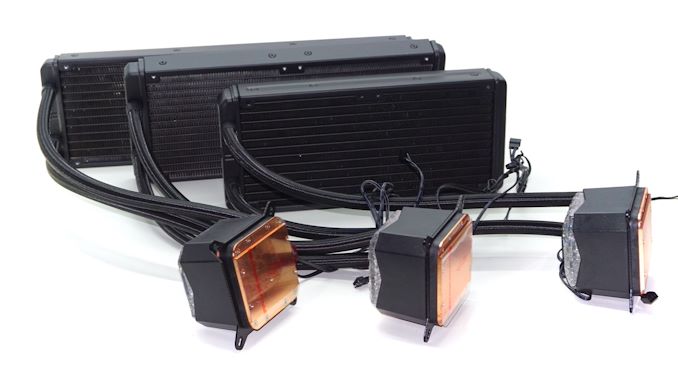
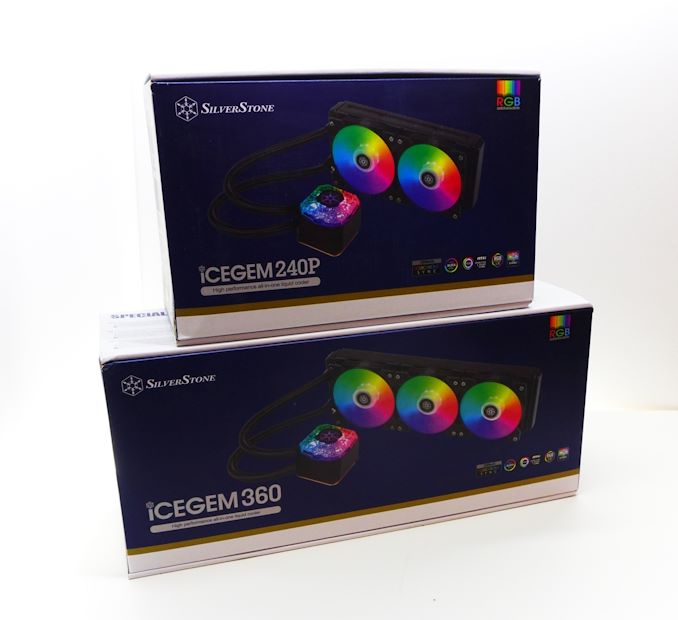
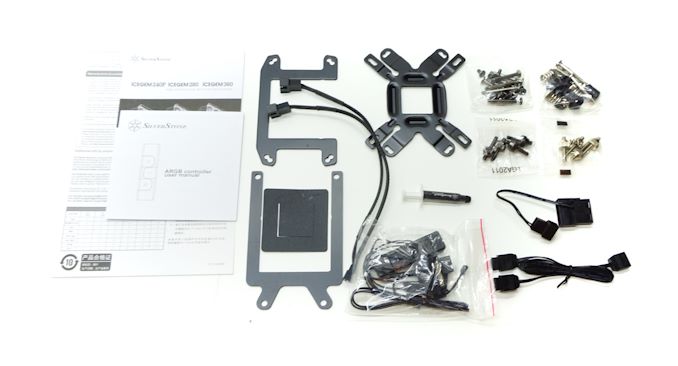
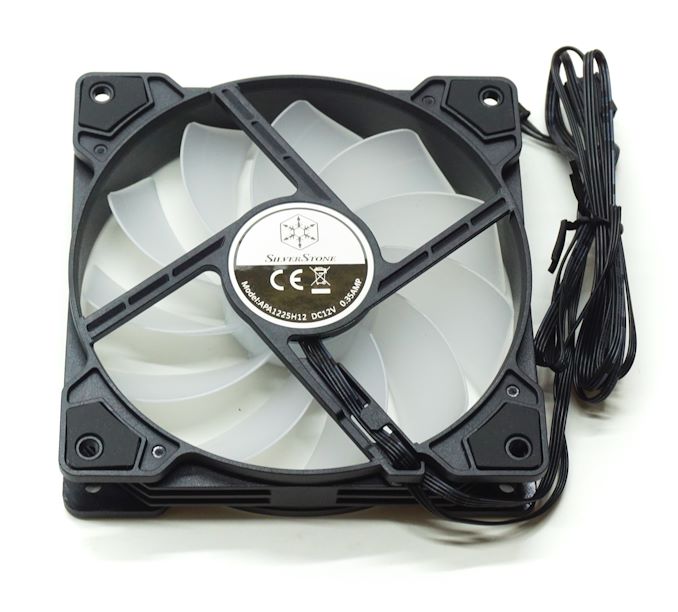
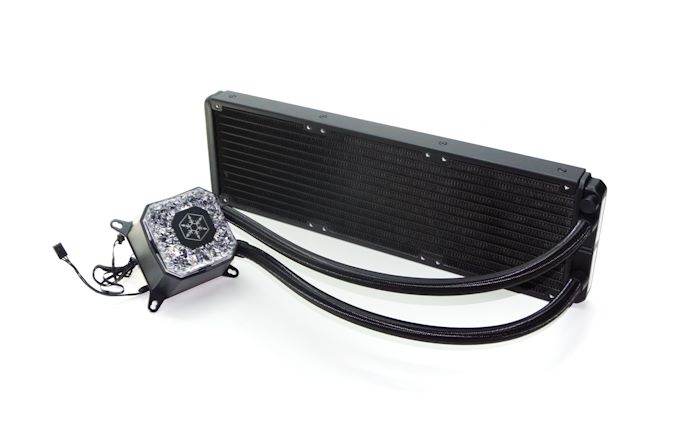
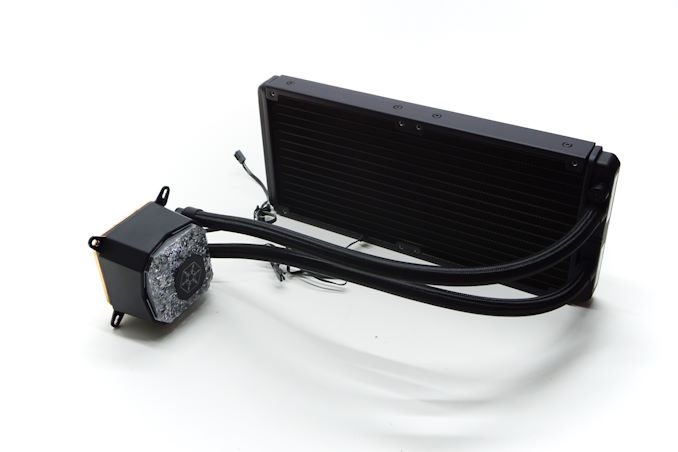

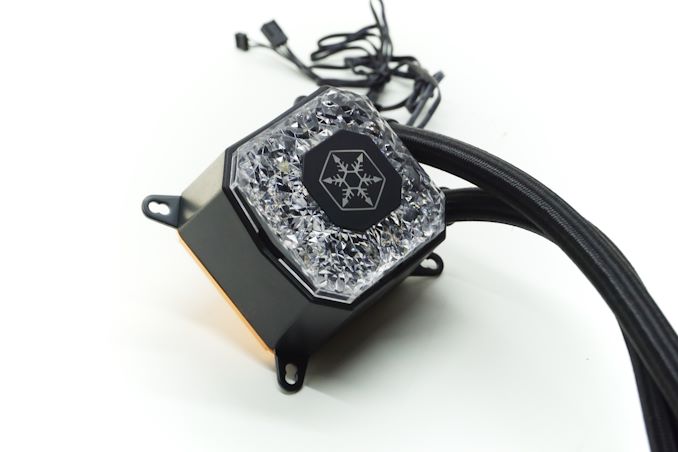
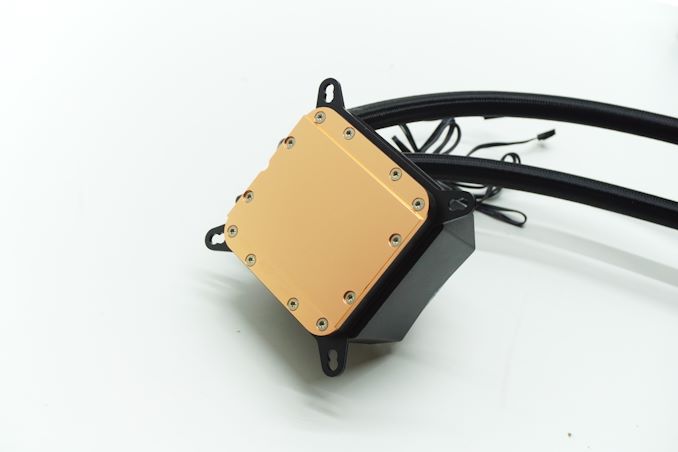
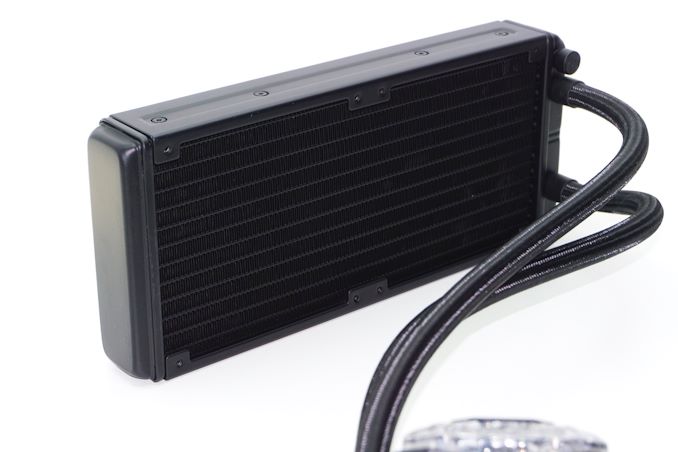

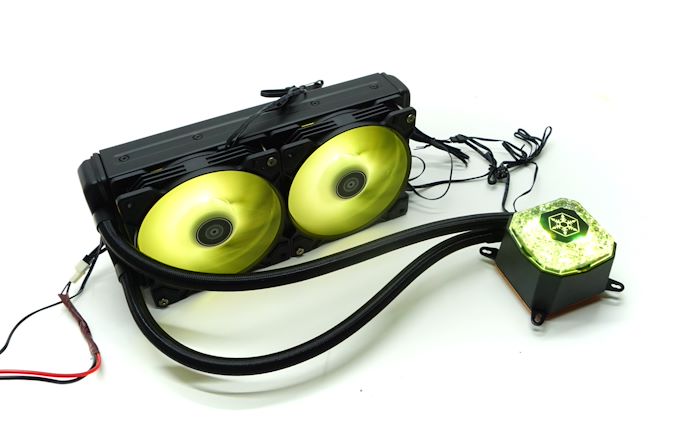
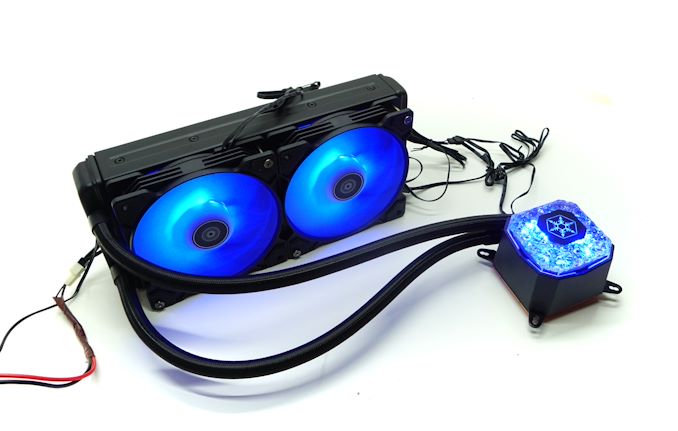









33 Comments
View All Comments
Threska - Saturday, July 24, 2021 - link
I think the larger point is that there isn't always an available choice. Sometimes the part we want is RGB or nothing. Not to mention the price could be larger for the RGB part.DominionSeraph - Sunday, July 25, 2021 - link
The issue is that there *is* no style or fashion with RGB. It's simply bad taste. No girl is going to walk into a room with an RGB setup and drop her panties because the fans light up and the keyboard is cycling through the rainbow. RGB is in the exact same vein as a racecar bed or Batman pajamas. If you're beyond the age of 10 and your taste hasn't matured into something with just a *little* more sophistication, it's a sign that something went wrong with your development.Oxford Guy - Sunday, July 25, 2021 - link
You’re paying for a feature you don’t want and other corners tend to be cut in terms of features you actually want.RGB stuff isn’t free.
DougMcC - Thursday, July 22, 2021 - link
I've never done a liquid cooled system. Could someone explain why the radiator on these coolers is designed to be mounted inside the case? Wouldn't it be drastically more effective if case makers designed for an external mount? Or am I just misunderstanding how you attach these to the case?meacupla - Thursday, July 22, 2021 - link
Yes, the best results can be had when you mount the radiator outside the case.But the results aren't drastically better when compared to mounting the radiator to the case's air intake.
Case makers tend to dislike external mounting of radiators, because buyers tend to want everything to be enclosed and look pretty. You would not only have the radiator dangling outside of the case, but you would also have the fan wires dangling out there too. It'll look like a cheap hack job.
swiftech and koolance used to make an external mount bracket for radiators, but now that most modern cases, especially the really large ones, are designed to accept 2 or more internally mounted radiators, why would AIO CLC makers bother to make an external one?
koolance still makes external radiators, but the cost on them is very high when compared to these internal AIO CLCs.
DougMcC - Thursday, July 22, 2021 - link
I see, thanks. I would think the dangling issues would be solved by having power delivered to the external radiator sleeved with one of the coolant tubes. Then you'd just have the pair of tubes into the case, and presumably the radiator top-mounted. Sounds like the cooling advantage isn't sufficient to drive adoption/standardization.Samus - Thursday, July 22, 2021 - link
This cooler is a weird size at 280mm, so it's likely only going to fit certain cases that use 140mm fans.Silverstone has moved to 140mm fans after trying 180mm fans as far back as the FT-01 Fortress. The 180mm fans were garbage and seemingly an exclusive Silverstone thing. I've had multiple fail over the years where the bearing shaft detaches. Other failures people have noted on the interwebs have shown the entire fan shroud detaches from the motor or the motor support beams on the back of the fan housing crack at the motor mount, both causing the fan to 'knock' as it spins off-center and makes contact with the case, filter, etc. Very unfortunate.
Anyway, basically the radiator attaches to the fan mounts of a case, with the fans mounted to the rear of the radiator. Some people do it the other way around, attaching the radiator to the fans. It depends what you desire for your cooling design (pusher fan vs puller fan) and some people do BOTH one in front and behind the radiator. The type of fan is an important consideration as well as most fans don't have high "static" pressure even if they are high RPM and rated at a high CFM. Static pressure traditionally isn't important unless you are trying to blow air through dense radiator fins, so sometimes the fan is more important than anything else, otherwise you won't remove much heat.
Awful - Thursday, July 22, 2021 - link
huh? 280mm using 2x140mm fans is absolutely one of the (3) standard sizes. Just about every AIO line comes in 240, 280, and 360mm...Threska - Thursday, July 22, 2021 - link
Have a Silverstone going on ten years plus. All fans top and bottom still going strong. Naturally regardless of fan one needs to keep them clean.tonyou - Thursday, July 22, 2021 - link
We haven't moved away from 180mm fans, in fact, we are still developing new models now. Engineering a fan with much heavier fan blade than typical 120mm x 25mm sizes was quite difficult as the rotational forces are exponentially higher. So material and bearing both have to be much stronger than typical 120mm/140mm fans. However, any external forces (such as debris or touching fan blade by accident) or slight tilt/angle enacted on our spinning 180mm also had significantly high risk of damage, so yeah, much less forgiving than smaller fans and that's why they may seem to be more fragile when in fact they are built better. With that said, we have been improving these 180mm fans over the years so the newer models and production batches should stand up better than their predecessors.